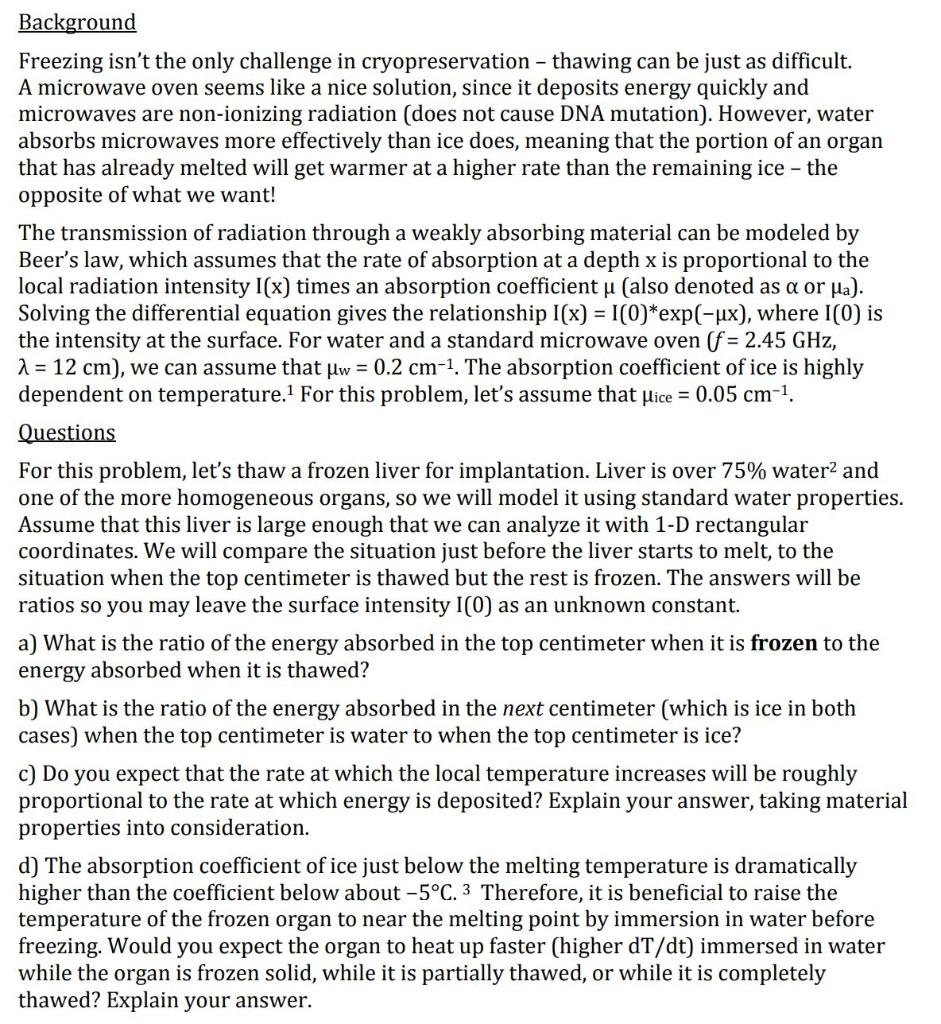
Background Freezing isn't the only challenge in cryopreservation - thawing can be just as difficult. A microwave oven seems like a nice solution, since it deposits energy quickly and microwaves are non-ionizing radiation (does not cause DNA mutation). However, water absorbs microwaves more effectively than ice does, meaning that the portion of an organ that has already melted will get warmer at a higher rate than the remaining ice - the opposite of what we want! The transmission of radiation through a weakly absorbing material can be modeled by Beer's law, which assumes that the rate of absorption at a depth x is proportional to the local radiation intensity I(x) times an absorption coefficient u (also denoted as a or Ma). Solving the differential equation gives the relationship I(x) = 1(0)*exp(-ux), where I(0) is the intensity at the surface. For water and a standard microwave oven (f = 2.45 GHz, 2 = 12 cm), we can assume that uw = 0.2 cm-1. The absorption coefficient of ice is highly dependent on temperature. For this problem, let's assume that ulice = 0.05 cm-1. Questions For this problem, let's thaw a frozen liver for implantation. Liver is over 75% water and one of the more homogeneous organs, so we will model it using standard water properties. Assume that this liver is large enough that we can analyze it with 1-D rectangular coordinates. We will compare the situation just before the liver starts to melt, to the situation when the top centimeter is thawed but the rest is frozen. The answers will be ratios so you may leave the surface intensity I() as an unknown constant. a) What is the ratio of the energy absorbed in the top centimeter when it is frozen to the energy absorbed when it is thawed? b) What is the ratio of the energy absorbed in the next centimeter (which is ice in both cases) when the top centimeter is water to when the top centimeter is ice? c) Do you expect that the rate at which the local temperature increases will be roughly proportional to the rate at which energy is deposited? Explain your answer, taking material properties into consideration. d) The absorption coefficient of ice just below the melting temperature is dramatically higher than the coefficient below about -5C. 3 Therefore, it is beneficial to raise the temperature of the frozen organ to near the melting point by immersion in water before freezing. Would you expect the organ to heat up faster (higher dt/dt) immersed in water while the organ is frozen solid, while it is partially thawed, or while it is completely thawed? Explain your







